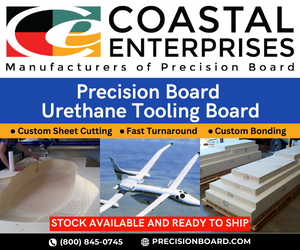Gardner Business Index at 54.2 in June
The Index is up from the same period in 2016 and subject to less volatility.
Overall, the US composites industry continued to expand in June (54.2), but did so at a slightly slower rate than it did in May. That’s the story told by the numbers recorded in the Gardner Business Intelligence Composites Business Index. In addition to the significant improvement seen over the past 12 months, the behavior of the Composites Index in 2017 also has been far less volatile than in the past. When a three-month moving average is used to help smooth out the volatility experienced in 2016, it can be seen that the Index has increased by 17%, moving from a three-month (April-June) average of 46.4 in 2016 to 54.3 for the current April-June average. Since the beginning of the year, all Composites Index components have signaled expansion except Exports, which in the year-to-date period has signaled either small decreases or no change. For the month of June, the Index was supported by growth in Backlogs, Supplier Deliveries and Production while the subindices for New Orders and Exports moved lower.
Index components continue to move favorably
During the first half of 2017, the total Composites Index benefited from growth in Production, Supplier Deliveries and New Orders. Through the month of June, each of these Index components had posted values that compared favorably to their cyclical highs from 2014. The Backlog and Export components of the Composites Index which lost their footing beginning in mid-2014 before moderating and improving in 2016, made further gains during the first half of 2017. For the first time in more than five years, Backlogs, as June closed out, had registered five consecutive months of growth or steadiness (readings at or above 50). Year-to-date Export readings also had continued to show improvement compared to the same six-month period in the past three years.
End-market demand for composites has generally grown for much of the past five years as more composite products find their way into aerospace and automotive industry applications. Less known is that the marine industry experienced substantial growth in 2016 across many of its watercraft categories. Unit sales of new watercraft in a variety of categories increased between 6% and 11.5% during 2016. The 2017 and 2018 sales forecast released by the National Marine Manufacturers Assn. (NMMA, Chicago, IL, US) in May 2017 predicts that sales growth over the next two years will be comparable to that of 2016. The Gardner Business Intelligence team will continue to monitor this development and assess its impact on composites fabricators and their suppliers.
Pricing divergence: closing a gap
A significant gap between the Index values for Material Prices and Prices Received, a trend first witnessed in early 2016, was reduced in the second quarter of 2017 as the subindex for Material Prices fell from a high of 72.0 in April to 62.4 in June. During the same months, the subindex for Prices Received changed only slightly, moving from 53.5 in April to 52.3 in June.
Related Content
-
Composites industry GBI contracted faster in July
The GBI: Composites maintains its consistent downward trend for the fifth month in a row.
-
Composites Index shows little change in January
The GBI: Composites Fabricating closed January at around the same contractionary reading in December, with a majority of components following suit.
-
Composites industry GBI stayed the course in February
The GBI: Composites Fabricating contracted in February to the same degree as January, maintaining its position in a contraction zone.

.jpg;width=70;height=70;mode=crop)











